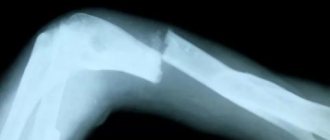Encephalotrigeminal angiomatosis (“kiss of an angel”) was first described by Sturge in the seventies of the eighteenth century using the example of a six-year-old child who had a bright red capillary hemangioma on the face in the area of innervation of the tertiary nerve. The skin anomaly was localized on one side, in the area of the zygomatic part, covering the orbit, forehead, and was based on a vascular tumor.
In 1922, Weber supplemented the clinical picture with damage to the meninges with calcifications from the side of the growth of the spot. At the beginning of the 20th century, Krabbe included retinal damage in the symptomatology. Subsequently, the disease was named Sturge-Weber syndrome (Sturge (Sturge) - Weber - Krabbe).
Causes of pathology
The anomaly develops during the perinatal period; the mesoderm (germ layer) of the fetus is disrupted, which leads to differences in homogeneous cells in the tissue. The disease refers to a sporadic (irregular) form of manifestation, transmitted through the dominant part of the same gene, without sex linkage. Recessive inheritance is very rare.
Sturge-Weber-Krabbe syndrome is formed in the fetus under the influence of a number of factors:
- Metabolic disorders in women during pregnancy (thyroid dysfunction).
- Chemical poisoning in the first trimester.
- Side effects of medications.
- Drinking alcohol, drugs, smoking tobacco.
- Sexual or intrauterine infections during the perinatal period.
The disease is classified as rare; the danger lies in the location of angiomas in the meninges and eyeball. Disruption of the central nervous system due to the syndrome leads to disability in childhood.
Prevention
In order for a child to be born without this pathology, the mother needs to be responsible about her lifestyle. It is known that Weber's disease develops if, during pregnancy, the fetus was exposed to negative influences, such as:
- smoking;
- alcohol and drug use;
- sexually transmitted infections (especially acquired during pregnancy);
- intoxication of various types;
- metabolic problems in the expectant mother.
So, the prevention of disease in a pregnant woman includes:
- Healthy eating, proper lifestyle.
- Taking into account medical recommendations.
- Examination before and during pregnancy.
- Walks, sleep, gymnastics.
Characteristic symptoms of the disease
The pathology belongs to an alternating group of syndromes that extend to the cranial, facial and eyeball nerves. The neurological disorder leads to partial loss of motor function on the side opposite to the lesion, to the development of strabismus, paralysis of the muscles of the tongue and face. The main indicator of the disease is a burgundy spot on one side of the face (photo) or torso; less commonly, capillary hemangioma has a bilateral localization.
Based on the nature of the syndrome, three combinations of signs are determined:
- vascular angioma of the intracranial membranes;
- angiomatosis of the face with damage to the retina;
- combination of capillary tumors (brain, face, eyes).
Each form is accompanied by corresponding anomalous disorders.
Facial lesion
The manifestation of the syndrome on the facial part is called “flaming nevus”, is present at birth or develops later. Angioma has the shape of a spot with blurred edges and changes with the proliferation of capillaries. The neoplasm is bright red or burgundy in color, covers half the forehead, one side of the nose, the upper cheekbone, the eye area, and ends above the upper lip. This is a classic symptom of the disease; “angel's kiss” can appear on both sides, covering the scalp, the back of the head and down to the torso.
Foci of localization of vascular lesions can be single, scattered or merging into a common form. When pressed, the problem area turns pale, then the color is restored. Over the course of a person’s life, the “flaming nevus” changes not only its shape, but also its color. In a newborn, this spot is light pink in color; as it grows, it darkens, acquiring a burgundy hue.
In most cases, the angioma is smooth and does not protrude above the surface of the skin. In a more complex form, the anomaly is accompanied by pigmentation, moles, limited edema, and hemangioma. Clearly expressed symptoms on the face are diagnosed in 99% of cases.
Neurological changes
Angiomatosis of brain tissue leads to calcification of the capillaries of the affected area, which, in turn, provokes the development of such pathologies:
- intracranial atrophy and necrosis;
- increase in glial cells;
- hydrocephalus;
- dementia.
The expansion of capillaries in soft tissues is an integral companion of the disease, worsening a person’s condition and prognosis.
Signs of brain damage begin to appear in the first year of a child’s life. The disease is characterized by a long clinical course, in which the signs of a neurological disorder progress, causing impaired motor function and mental retardation.
The proliferation of blood vessels creates pressure on neurons, creating a convulsive syndrome. A pattern is noted: the greater the mental retardation, the more pronounced the epileptic seizures. Muscle contraction is activated on the side opposite to the lesion. Over time, the area of capillary proliferation increases, and attacks progress. These factors affect the emotional state and cause mental deviations in behavior. Sturge-Weber syndrome is accompanied by the following symptoms:
- cognitive disorders;
- memory impairment;
- decreased learning ability;
- irritability;
- aggression;
- rancor, vindictiveness.
In adults, each epileptic seizure leads to a decrease in intelligence. Intracranial pressure causes constant headaches. Paresis, paralysis, muscle weakness, and loss of sensitivity are formed on the side opposite to the brain lesion.
Eye signs
Ophthalmic changes associated with the disease are characterized by abnormal changes in the vascular tract. The angioma is localized in the papillomacular part. A light gray circle-shaped neoplasm (photo) calcifies, creating pressure and a favorable environment for the development of glaucoma.
The pathology disrupts the flow of fluid inside the eye, and hydrophthalmos is formed. Sturge-Weber syndrome in ophthalmology is manifested by the following problems:
- corneal clouding;
- enlargement of the eyeball;
- decreased vision (complete blindness is possible);
- narrowing the boundaries of visual capture;
- retinal atrophy.
Glaucoma may appear immediately after birth or develop later.
Kinds
Weber's disease has the following varieties:
Schirmer - accompanied by glaucoma, as well as hemangioma (ocular and skin).
Milles - hemangioma of the eye with manifestations of angioma on the skin, in the eye area (without early glaucoma).
Knud -Rrubbe- Weber syndrome – encephalotrigeminal angioma.
Weber - Dumitri - characteristic features of the syndrome are epilepsy, seizures, developmental delay, hemihypertrophy.
Jahnke - skin angiomas, as well as vascular lesions of areas of the brain.
Loford – vascular tumors of the eyeball (without enlargement).
Necessary diagnostics
The syndrome is determined by three criteria: the presence of capillary hemangioma on the face, neurological abnormalities, and ophthalmological abnormalities. Diagnosis is carried out by laboratory examination of cerebrospinal fluid and the use of instrumental techniques, including:
- Computed tomography of the cerebral cortex.
- X-ray of the skull to identify areas of calcium deficiency.
- PET (positron emission tomography).
- Electroencephalography, which determines the speed of bioelectric impulses.
- Magnetic resonance imaging to differentiate cystic formations, tumor, abscess. Allows you to analyze the degree of atrophy.
- SPECT (single photon emission computed tomography).
Ophthalmological diagnosis is carried out by:
- measuring intraocular pressure;
- determining the quality of vision;
- ophthalmoscopy;
- ultrasound biometry;
- gonioscopy;
- perimetry;
- AV scan.
The transparency or turbidity of the cornea is taken into account.
Diagnostic measures
It is the specialist who will prescribe the correct diagnostic tests and make the most accurate diagnosis, and then prescribe effective treatment.
The diagnostic complex for encephalotrigeminal angiomatosis consists of several stages and procedures:
First, the medical history and complaints of the disease are analyzed
- Symptoms of Sturge-Weber disease
- How it manifests itself
- Diagnosis of the disease
- Basic treatment methods
- Therapy
- Types of pathology
- Principles of treatment
- Clinical picture of the disease
- Definition and types of angiomatoses
- Characteristic symptoms of the disease
It is important to know at what age symptoms began (seizures, weakness, headache, etc.). It is necessary to clarify whether any other family members had this disease
A neurological examination of the patient will be required. At the same time, skin sensitivity and muscle strength of all extremities of the body are carefully assessed. You'll have to go see an ophthalmologist. Only he will measure intraocular pressure, examine the eyes, and study their internal structure. This is necessary to detect angiomas that may appear on the lining of the eye. And if the optic nerve is swollen, then the doctor will be able to determine the presence of increased intracranial pressure. Often, the attending physician refers the patient to a consultation with a medical geneticist. Computed tomography and MRI will help to see all the changes in the brain (those areas where the cortex is most thinned, where tumors and angiomas are present). Electroencephalography is a technique that allows you to evaluate the electrical conductivity and activity of the brain in various areas. Depending on the disease, this parameter may change. Especially if there is an epileptic focus (this is the main cause of convulsive seizures).
If surgical intervention is necessary to treat the disease, you will definitely need to see a neurosurgeon. He will not only give advice on preparing for surgery, but will also tell you all the stages and consequences of such treatment.
Slowly progressive Charcot-Marie amyotrophy is nevertheless very dangerous for human health and life.
Tabes dorsalis is the most severe complication of neurosyphilis. What happens if you don’t start timely treatment for the disease.
Treatment recommendations
There is no specific treatment for Sturge-Weber syndrome; therapy is symptomatic. In the case of an isolated flaming nevus on the face or body, when the central nervous system and visual function are not affected, no special treatment is required. Recommendations for eliminating the defect are cosmetic in nature. Tattooing with beige paint is effective, and the “angel's kiss” will not stand out on the skin.
In case of serious damage to the cerebral cortex and retina with capillary growth, surgical intervention is indicated. Trabeculotomy is performed and pathology is corrected using a laser.
Medications are prescribed to relieve symptoms and improve the patient’s quality of life. The following drugs are used:
- Drugs against epilepsy and anticonvulsants - Carbamazepine, Seduxen, Keppra, Valproic acid, Finlepsin, Topiramate. "Depakine."
- Medicines for normalizing the secretion of ocular fluid - Dorzolamide, Brimonidine, Brinzolamide, Alphagan, Timolol, Azopt.
- Tablets to prevent cerebral edema and diuretics - Mannitol, Furosemide.
In case of serious disorders of the central nervous system, which resulted in paralysis and mental retardation, the patient needs special care.
Affected Populations
Encephalotrigeminal angiomatosis affects men and women equally. The exact frequency and prevalence are unknown. One estimate puts the incidence at 1 in 20,000–50,000 live births. Approximately 3 in 1,000 babies are born with nevus flammeus, but only about 6% of patients with a facial mole develop neurological problems associated with the disease. The risk increases to 26% if the nevus is on the forehead, temple or upper face. The syndrome can affect people of any race or ethnicity.
Possible complications and prognosis
The consequences of the disease depend on the degree and location of the lesion. In the case of the formation of local capillary hemangioma on the face, not complicated by encephalotrigeminal angiomatosis and the development of glaucoma, if the spot remains unchanged from the moment of birth, the prognosis is favorable. Apart from cosmetic discomfort, it does not cause problems to humans.
With a pronounced progressive clinical picture of systemic damage to the meninges, eyes and internal organs, the consequences of the syndrome can be serious:
- Frequent epileptic seizures without adequate treatment lead to the development of mental retardation and the risk of stroke.
- Bleeding is possible.
- Severe neurological disorders (decreased intelligence).
- Severe deformation of the facial muscles.
- Weakness of the muscles of the limbs.
- Decreased vision clarity or loss.
- Violation of intracranial circulation.
Death can occur in the case of cerebral edema due to status epilepticus (a condition characterized by continuous seizures).
Neurological changes
Weber alternating syndrome is associated with damage to the nervous system. Neurological and ocular abnormalities are noticeable almost immediately after birth.
Neurological disorders include:
- convulsive syndrome (limb contractions and seizures);
- delay in mental development and behavior;
- paralysis, paresis; skin sensitivity decreases.
The patient's blood vessels grow and affect the brain. They irritate neurons, causing seizures. Increased intracranial pressure can provoke migraines.
Compression of the brain can result in the following complications:
- sclerosis;
- atrophy;
- necrosis;
- also salt deposition, dementia.
Angiomatosis (vascular neoplasms) of the patient can lead to constant epileptic seizures. Namely, status epilepticus. If a person does not have time to recover after them, then seizures threaten cerebral edema and death of the patient.
Eye disorders
Eye disorders include:
- glaucoma;
- cataract;
- retinal disinsertion;
- vision problems;
- deformation of the eyeball (enlargement).
Great people who faced illness
Local manifestation of Sturge-Weber syndrome is not a death sentence. A skin abnormality that does not affect the vital functions of the body does not affect intellectual abilities, choice of profession, or career. One of the great people, oh, is Mikhail Gorbachev - a Russian politician who went down in the history of the country as the last secretary of the CPSU Central Committee, a reformer who launched the process of perestroika. His congenital angioma was located on the front of the skull and was a kind of “calling card”.
( 3 ratings, average: 4.67 out of 5)
How it manifests itself
Basic classic symptoms.
Vascular tumors on the face
The spot usually covers one side, including parts of the forehead, cheekbones, nose and lips. This is due to the fact that this part is influenced by the first and second branches of the triple nerve, which are affected when the disease is present. In some cases, the stain may be on both sides. Appear at birth or over time.
Seizures
These are involuntary movements of the limbs. Observed on the opposite side of the face from the vascular tumor. This occurs due to the effect of angioma on the cerebral cortex. In some cases, these movements can result in involuntary urination, fainting and convulsions of the entire body. These symptoms appear in the first year of a child’s life.
Others
Additionally, others may be present:
- low sensitivity and weakness of the limbs that are on the other side of the angioma;
- visual impairment - short-term blurring occurs or glaucoma may develop, complete loss of function;
- when the lesions are located in the occipital region, then complete loss of some visual fields is possible;
- delayed psychological and mental development, absent-mindedness, inattention, lethargy, memory loss;
- chronic headache;
- unstable emotional state of the child: tearfulness, hyperactivity, irritability, aggressiveness.
Patients experience enlargement of the eyes and clouding of the corneas - this is associated with increased intracranial pressure.
Therapy
And finally. Treatment of bacillary angiomatosis consists of antibiotic therapy (erythromycin, doxycycline, tetracycline, minocycline, ciprofloxacin and norfloxacin). For single lesions, local therapeutic procedures are prescribed: excision, cryotherapy or electrosurgery. If necessary treatment measures are delayed, the disease may be fatal.
The duration of treatment ranges from two weeks to several months. If relapses of bacillary angiomatosis occur (with HIV infection), therapy is lifelong. To prevent re-development of the disease, it is recommended to avoid contact with carriers of the disease, especially cats and dogs.
All materials are published under the authorship or editorship of medical professionals (about the authors), but are not a prescription for treatment. Contact the specialists!
When using materials, a link or indication of the source name is required.
Angiomatosis is understood as a condition manifested by excessive proliferation of blood vessels that acquire the characteristics of tumor growth. This syndrome can be observed in a variety of diseases, but all of them are usually severe.
Angiomatosis accompanies developmental defects, appears in people with impaired immunity, and can be combined with other congenital anomalies. Foci of proliferation of blood vessels are found in the skin, internal organs, meninges, vascular system of the eyes, etc.
Depending on the prevalence, local angiomatosis is distinguished when the lesion is limited. Typically, such a change appears in one area of the body - on the face, in the liver, in the mucous membranes of the digestive or respiratory organs. In other cases, angiomatosis manifests itself as a systemic lesion that simultaneously affects the skin, internal organs, bones, and nervous system.
Local angiomatosis usually does not pose a threat to life and proceeds benignly, while the systemic process is fraught with dysfunction of vital organs, severe neurological disorders, and bleeding.
It has not yet been possible to find out the exact cause of the tumor-like growth of blood vessels, but the role of a hereditary factor and a violation of organ formation in the process of embryonic development is assumed. Certain importance is given to immunodeficiency syndromes.
The symptoms of angiomatosis depend, first of all, on the location of the lesion. The most characteristic signs are the presence of a tumor-like conglomerate of vessels of different sizes, which can cause bleeding. If the central nervous system is damaged, severe neurological symptoms develop; if the eyes are involved, blindness is possible; with angiomatosis of the internal organs, their function is impaired.
local angioma on the face (left) and angiomatosis, which may be a sign of systemic disease (right)
Patients with angiomatosis are treated by a variety of specialists. If changes affect the skin, then the patient is referred to a dermatologist or surgeon; if the eyes are affected, the help of an ophthalmologist is needed; involvement of the brain and its membranes requires the participation of a neurologist.
Treatment of angiomatosis includes both surgical intervention and a symptomatic approach; tactics are determined by the localization and behavior of vascular lesions, so the principles of therapy vary greatly among different patients. The prognosis depends on the form of the pathology: in some cases it is quite favorable, in others the disease progresses, leading to severe disability, without giving a chance of cure.
Among the types of angiomatosis are:
- Diffuse angiomatosis, accompanied by systemic damage;
- Isolated retinal angiomatosis;
- Kaposi's angiomatosis is a manifestation of sarcoma characteristic of immunodeficiency syndrome due to HIV infection;
- Sturge-Weber angiomatosis;
- Bacillary angiomatosis, which occurs due to a bacterial infection.
It is clear that such a division is largely arbitrary, because angiomatosis can be not only an independent pathology, but also a manifestation of other diseases, as happens with AIDS, for example. One of the rare, but very serious pathologies is Sturge-Weber angiomatosis, which will be discussed further.









